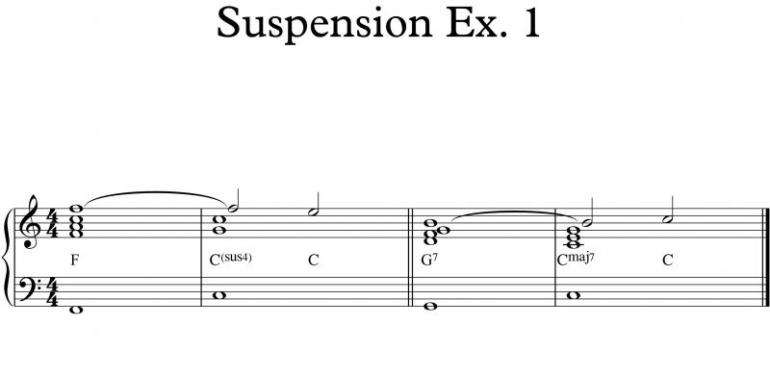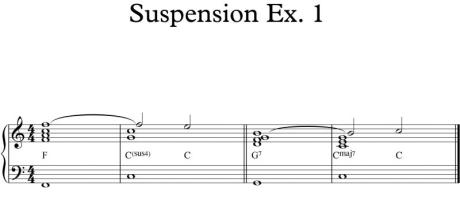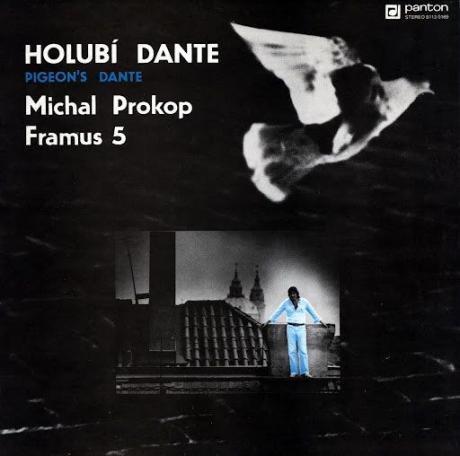Rockové klávesy - Akordy sus4 a sus2 v populární hudbě

Greetings Readers, and welcome to another edition of Rock Keyboards. As rhythm players in a rock band, I think we can learn a lot from guitar players. Certain open string chords found in many rock riffs lend themselves very well to a technique called suspension. This month I wanted to take a look at some classic guitar parts that use this device and give you a few ideas for how to get the sound in your piano comping as well. For those of you not familiar with what a suspension is, lets take a quick look at where it comes from.
Use of suspension in classical music
The sound of suspension has always been in the Western European classical music. We should start with a brief explanation of what a suspension is. From Encyclopedia Britannica:
Suspension: a means of creating tension by prolonging a consonant note while the underlying harmony changes, normally on a strong beat
The resulting dissonance persists until the suspended note resolves by stepwise motion into a new consonant harmony. In the examples above, the upper note is suspended then resolved.

Use of suspensions in modern pop music
In modern pop music suspensions happen often in guitar instruments and usually around the 3rd of a chord. It is also common for the 3rd of the chord to be approached from the 2nd scale degree. Check out how suspension works in the guitar part of Needles and Pins from ’60s English rock band, Smokie:
https://www.youtube.com/watch?v=0S-t45AGIpc
The tune starts with an A triad (A, C#, E). In the opening guitar riff the C# melody in A bar chord dips down to the 2nd scale degree (B) of the A major scale (A, B, C#, D, E, F #, G #, A) before going to the 3rd again and then up to the 4th (D) and back down again. The open B string makes this part sound great on guitar and provides movement over a static harmony.
Other popular suspension shapes
It's also very common to have guitar parts with suspensions in the key of D because of the open E string. Marshall Tucker Band’s Can’t you See is in D and has lots of cool suspensions as the the bass line descends the D mixolydian scale (D, E, F#, G, A, B, C, D). This time the direction of the suspensions is opposite that of Smokie’s. The third of the D chord goes up this time before going up to the 4th, back down to the 3rd, to the second, then back up to the 3rd:
https://www.youtube.com/watch?v=-48Za7VZR_c
We can this technique in our keyboard parts as well. It’s really quite simple. Next time you are jamming on a tune, experiment with moving the 3rds of your chords to the 2nd and 4th scale degrees. As long as you stay in the mode your chord progression is, your parts should sound great. It doesn’t matter if you a minor tonality either. Try playing the above A and D triads on the piano (A, C#, E) and (D, F#, A). Practice playing the trad in the right hand while the left hand just plays octaves on the root. Play in any kind of rock rhythm you like, and as you play the chords, practice moving the middle note of the triad up and down 1 scale step. The spelling of both scales are above in the examples. For extra credit, switch to a minor triad with it’s corresponding mode, A dorian (A, C, D, E, F#, G, A) and D dorian (D, E, F, G, A, B, C, D). For extra, extra credit, move your left hand around to different bass lines in the modes and come up with your own killer suspended progression!
Fráze a hudební termíny
Lilting waltz: sloveso „to lilt“ se překládá opravdu obtížně. Obecně označuje způsob mluvy, zpěvu či hry na nástroj, kdy intonace neustále plynule a přirozeně stoupá a klesá. Něco ve smyslu „vlnit se“ nebo „pulzovat“. Často se objevuje v popisu přízvuku (např. „Irish lilt“). Zajímavé je, že toto slovo má v podstatě vždy pozitivní nádech a signalizuje lehkost a nenucenost. Na výraz také často narazíme i v souvislosti s rytmem, což je případ právě Brianova článku. „Lilting waltz“ tak bude waltz vlnící se, přirozeně plynoucí, či pulzující.
Cross stick: bubeníkům vysvětlovat nemusím. Pro ty ostatní, hra na bicí stylem cross stick, což je synonymum pro výraz side stick, se konkrétně týká malého bubnu. Jeden konec paličky položíme na blánu „virblu“, zatímco druhý necháme dopadnout na ráfek. Rozhodně bychom tak tento pojem neměli zaměňovat s technikou rim shot, při které palička dopadá na ráfek i blánu zároveň.
Drop 2 voicing: tento pojem jsem v minulosti i já chápal špatně. Nejedná se totiž o klasický obrat akordu, ale o techniku, kdy druhý nejvyšší tón akordu přesuneme do nižší oktávy nezávisle na tom, jaký obrat byl základem. Někdy to také znamená, že se tón, který původně hrála pravá ruka, předá ruce levé. Získáme tak velmi otevřený prstoklad, který je sice harmonicky shodný s tím původním, ale ve skutečnosti dodá skladbě jiný rozměr.
Chromatic embellishment: chromatické ozdoby, tedy ozvláštnění melodie např. trylky, odrazy či přírazy, v nichž používáme sousední tóny, tedy interval malé sekundy.




